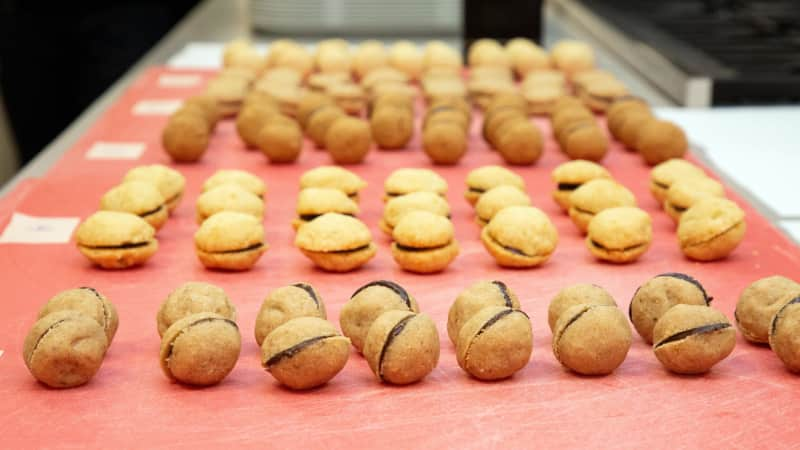If I had a dollar for every time someone came up to my workstation in the test kitchen and proclaimed, “Those cookies are so cute!” I could retire. But endearing as they are, baci di dama are also fussy, and a few batches into my recipe development, I wanted to retire.
Hailing from the Piedmont region of Italy, baci di dama are sandwich cookies that consist of two tiny hazelnut buttons held together by a slim chocolate filling. (Their name translates as “lady’s kisses” because each sandwich is said to resemble a woman’s pursed lips.) Sandwich cookies are laborious to make by nature, but these are made from a short, fragile dough that must be chilled for at least an hour lest it soften too much to be workable. And because the cookies are bite-size, the portioning step is a real bear: A single batch makes dozens of cookies, each of which must be measured (often weighed) precisely so that all the sandwich halves match up perfectly. Once the cookies have been baked and cooled, half of them are overturned and dolloped with melted chocolate (or sometimes Nutella or ganache), gently topped with the remaining cookies so that the filling spreads just to the edges, and left to sit briefly so that the chocolate sets.








